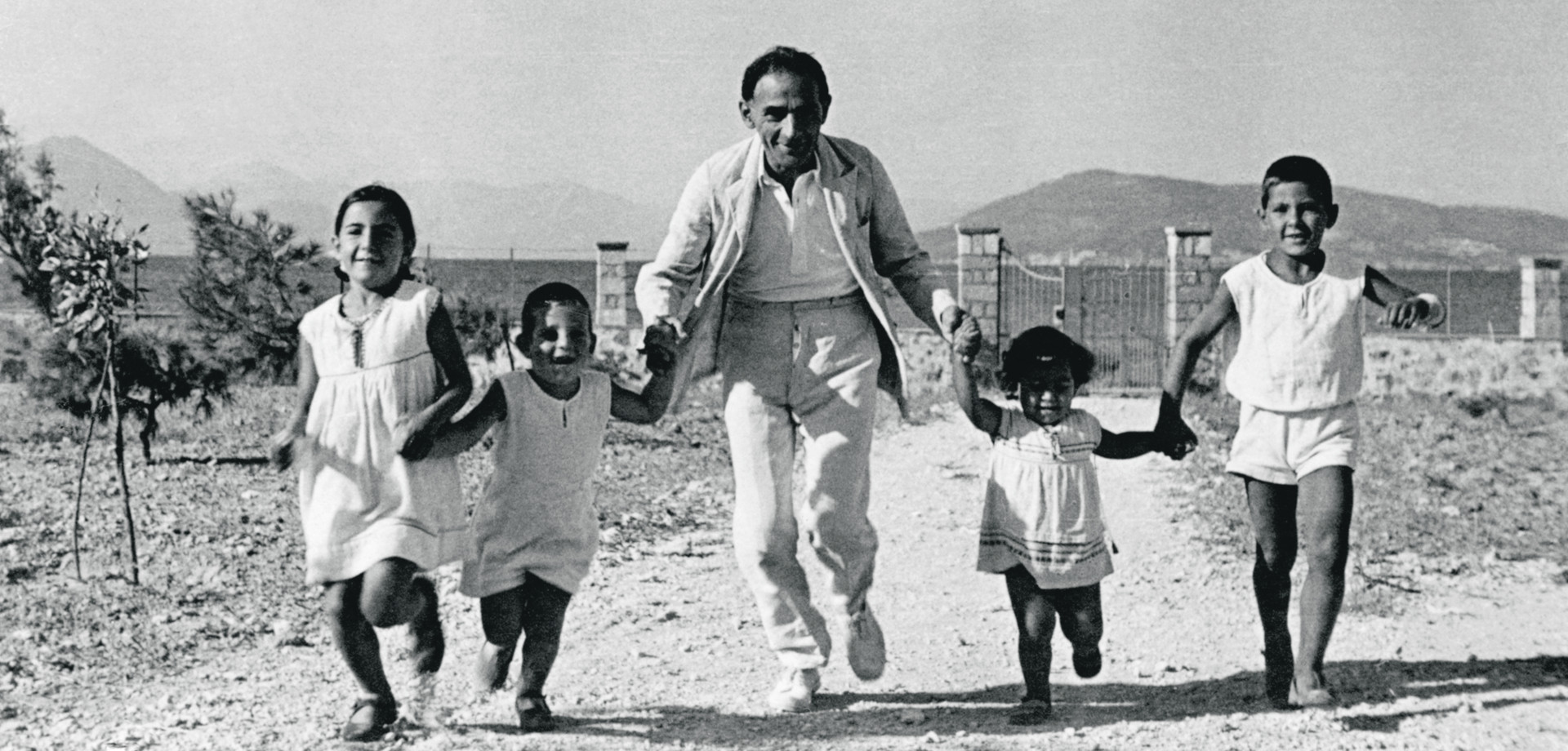
Stories Talk | Presentation Skills and Effective Storytelling
Stories Talk | Presentation Skills and Effective Storytelling
By Mia Kollia
Translated by Alexandros Theodoropoulos
Visionary - As an architect, he always looked for the way in which a building was integrated into the landscape harmoniously and naturally, but also in accordance with humans and their needs.
Open-minded - As a teacher, he often taught his students in the courtyard of the School, so that the lesson would be more vivid and interesting. Other times, he urged them to hold the pencil with their left hand to make the drawing less perfect and more expressive.
Versatile – An architect, painter, philosopher, poet and academic professor, known mainly for the design and implementation of the paved path leading to the Parthenon and the green works around the Acropolis and the hill of Philopappos, Dimitris was a man who created some astonishing constructions.
Groundbreaking - "What is exceptional about Pikionis is that at a time when building theories came to replace architecture, Pikionis reacted by wanting to present architecture as an art, without being ashamed of it like his contemporaries who thought it would be more classy to be called building theorists”, wrote Yannis Tsarouchis about the inspired architect who broadened the aesthetic horizons in Greece.
Dimitris Pikionis was born in 1887 in Piraeus to parents from Chios. As a child he had an inclination to draw. In 1904 he enrolled in the Technical School and in 1906 he became the first student of painter Konstantinos Parthenis. During his studies he developed friendly relationships with Anastasio Orlando, Joseph Pestarini, Giorgio de Chirico, Dimitris Kampouroglou and Periklis Giannopoulos.
In 1908, after graduating from the Technical School as a civil engineer and at the urging of Parthenis, Pikionis went to Munich to study painting. In 1909, he went to Paris, on the occasion of some of Paul Cézanne's works, and remained there until 1912. However, thinking that his finances wouldn’t help him on the journey he had taken, he spent the rest of his time in the French capital learning everything regarding architecture.
He returned to Greece and after his military service, he began to study the architecture of the Modern Greek tradition. In 1925 he became a temporary professor at the Department of Decoration of the Technical University of Athens. Five years later he became permanent and continued to teach until 1958.

Pikionis built the first house (the house of Moraitou) in 1923 in Tzitzifies - a building with a style of Attic folk architecture - while in 1933 he built the Primary School in Pefkakia, Lycabettus. Its pure cubic structure intertwines with the pine-covered landscape, seeking functionality and the coupling of the shape by erasing the boundaries.
However, at that time he realised that he wasn’t satisfied with his works and changed his aesthetic perceptions. He thought that the global spirit must be connected with the spirit of ethnicity. All his subsequent architectural works were based on this concept. The houses in Kypriadou, the house of Moraitis in Tzitzifies, the prefabricated tombs, the apartment building in Heyden, the "Xenia'' hotel of Delphi and the Forest Village in Pertouli, stand out among many others.
Dimitris Pikionis' relationship with painting is reflected in many of his creations, such as the playground of Filothei (1961-64), where he employed great imagination to design a unique place for children. It is also one of his works that expresses the perception that all cultures have a common and eternal basis: everything is a different manifestation of the same. Perhaps it is no coincidence that he worked with so much love in this area.
The landscaping of the Acropolis and the hill of Philopappos is considered to be his most significant masterpiece. In the form of a network of cobblestone paths, this configuration is groundbreaking and unique, precisely because it is above all modest and perfectly integrated into the landscape.
Working with his students and local stonemasons, Dimitris Pikionis applied the technique of paving using leftover ruins from the reconstruction of the then developing capital. The works took place from 1954 to 1958 and Konstantinos Karamanlis, who was the then Minister of Public Works - but inaugurated it as Prime Minister – was visiting Dimitris Pikionis almost every day in his work, expecting not only to highlight Attica and the Acropolis in the most ideal way (Greece was then starting its large tourist openings), but at the same time not to affect the aesthetic history of the place.
On August 28, 1968, Pikionis died in Athens and the art world lost one of its greatest leaders.
#HisStory